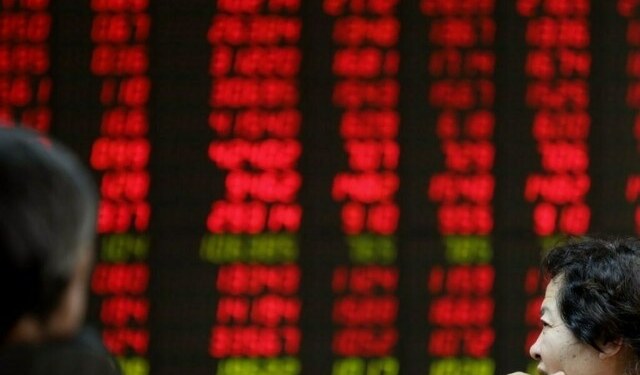Investing.com – Gold prices rose on Friday as the dollar hovered near three year lows amid fears over the prospect of a U.S. government shutdown, but the precious metal still ended the week slightly lower.
for February delivery settled up 0.29% at $1,331.10 on the Comex division of the New York Mercantile Exchange.
For the week, the precious metal dipped 0.13%, snapping five weeks of gains after falling from Monday’s four-month highs of $1,344.90.
The , which measures the greenback’s strength against a trade-weighted basket of six major currencies, edged up 0.2% to 90.49 late Friday. It touched a low of 89.96 earlier, the weakest level since December 2014.
For the week, the index was down 0.4% and it has declined 1.46% so far in 2017.
The dollar has been pressured lower by the view that the global economic recovery will outpace U.S. growth and prompt other major central banks, including the European Central Bank to begin unwinding loose monetary policy at a faster pace.
A dollar-denominated commodity, gold becomes cheaper for overseas buyers when the U.S. currency weakens.
Elsewhere in precious metals trading, was up 0.42% at $17.02 a troy ounce late Friday, while rose 0.5% to $1,098.80.
was up 0.94% at $1,016.7, after rising as high as $1,020.7 earlier, the most since September. Platinum ended the week 1.8% higher, a sixth consecutive weekly gain.
Among base metals, ended Friday down 0.59% at $3.180 a pound. The industrial metal has declined since hitting almost four year highs in late December, but some analysts expect demand from China, the world’s top consumer, to support prices.
, investors will be focused on the outcome of monetary policy meetings by the ECB and the Bank of Japan.
Market watchers will be looking ahead to data on fourth quarter growth from both the U.S. and the UK.
The World Economic Forum in Davos and talks on the North American Free Trade Agreement will also be closely watched for developments.
Ahead of the coming week, Investing.com has compiled a list of these and other significant events likely to affect the markets.
Monday, January 22
Canada is to report on wholesale sales.
Tuesday, January 23
The BoJ is to announce its benchmark interest rate and publish a rate statement which outlines economic conditions and the factors affecting the monetary policy decision. The announcement is to be followed by a press conference.
The UK is to release data on public sector borrowing.
The ZEW Institute is to report on German economic sentiment.
The first day of World Economic Forum meetings are due to take place in Davos, Switzerland.
Wednesday, January 24
The euro zone is to release data on manufacturing and service sector activity.
The UK is to publish its monthly jobs report.
The U.S. is to report on existing home sales.
Thursday, January 25
New Zealand is to report on consumer price inflation.
The Ifo Institute is to release data on German business climate.
The first day of World Economic Forum meetings are due to take place in Davos, Switzerland.
The EBC is to announce its latest monetary policy decision. The announcement is to be followed by a press conference with President Mario Draghi.
Canada is to release data on retail sales.
The U.S. is to produce reports on jobless claims and new home sales.
Friday, January 26
Financial markets in Australia will be closed for the Australia Day holiday.
The UK is to release preliminary data on fourth quarter economic growth.
Canada is to release what will be closely watched inflation data.
The U.S. is to round up the week with preliminary data on fourth quarter economic growth, as well as a report on durable goods orders.
Source: Investing.com



























